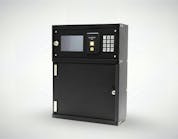Problem Solver: Tools for Servicing Cylinders
Inventory your tools and supplies before heading to a job site. This will potentially save you the loss of time, revenue and, perhaps most importantly, your professional reputation.
There are so many different makes and models of cylinders that it would be impossible to discuss methods for servicing them without going into great detail for each manufacturer. Instead, we’ll take a look at what types of tools you should have on hand to properly service any cylinder.
No matter how a cylinder is held together, you’re going to need a common set of tools to service it beyond the standard screwdriver. However, as anyone who has a tool set knows, tools have a tendency to disappear over time - particularly if they are shared with others. As servicing a cylinder requires you to travel to a job site, it is important to do a regular inventory of what tools are actually on hand as nothing is quite so frustrating, or potentially embarrassing, as discovering that a vital tool is missing in the middle of a service call.
In order to be properly prepared for any difficulty you may encounter on the job site, your service kit should include the following:
- A good set of screwdrivers. This should include a number 0 Philips-head screwdriver and a small, straight bit screwdriver.
- A torx bit screwdriver set and a security torx bit screwdriver set
- A universal pinning kit or one designed for the manufacturer of the cylinder
- Plug followers
- One plug holder
- One set of tweezers designed to hold pins
- One set of truarc pliers
- One set of needle-nose pliers
- A small hammer
- Cylinder shims
- Replacement pin springs for the specific manufacturer
- A key - either an existing one or the means to make a new key
One item that some may notice is missing from this list is a file. There was a time when the common practice was “if the pins are a little high, just knock ‘em down with a file.” However, good cylinder servicing with the right parts, tools and information should eliminate the need for a file.
In addition to these tools, you’ll also want to have access to reference data around the manufacturer’s pinning spec that you’re working with. In order to pin the cylinder, you need to know the particular specs for that model.
Doing a job properly requires knowledge, experience and preparedness. Taking a few minutes to do an inventory of your tools and supplies before heading to a job site will potentially save you the loss of time, revenue and, perhaps most importantly, your professional reputation.
Monte Salway is the commercial key systems product manager for Allegion. For more information, visit Allegion.com.





